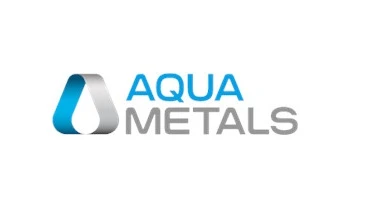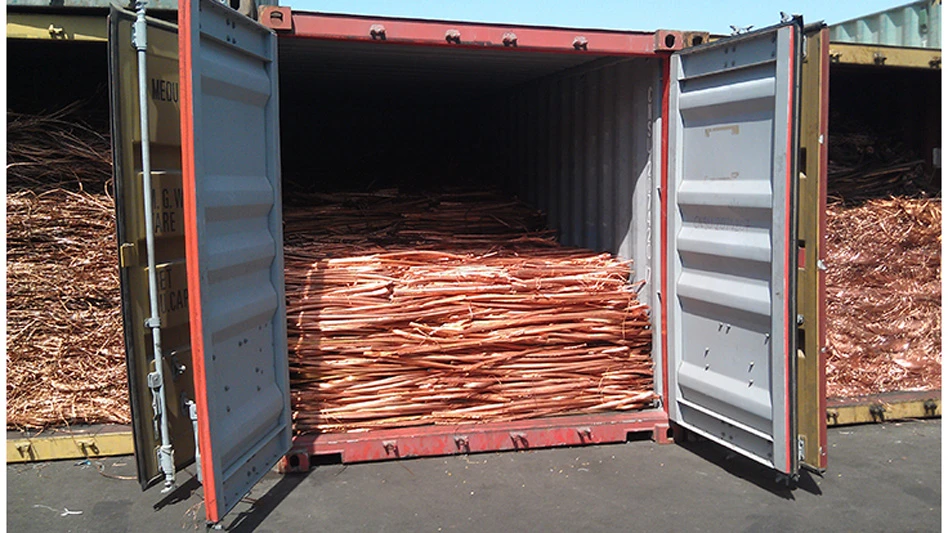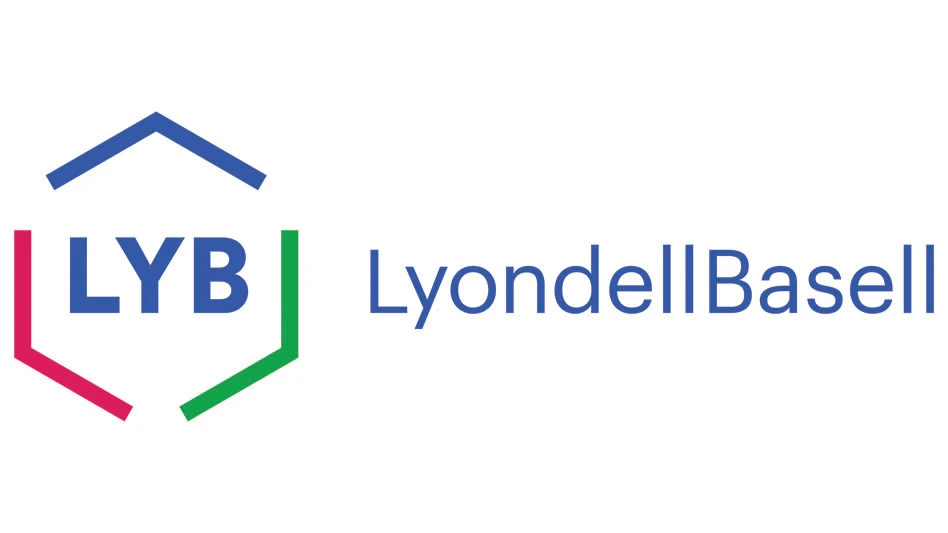Just as you wouldn’t use a fork to eat soup, you wouldn’t use a magnet for handling nonferrous scrap. In other words, it’s important to use the right attachment for the job when handling scrap. Attachments come in a wide variety of types and styles and are categorized into five major areas – grapples, mobile shears, buckets, crushers and lifting magnets. These attachments (except magnets) operate off of four hydraulic lines – two to open the attachment and two to close it. Attachments are possibly the single biggest factor affecting cycle time. If a grapple or magnet can lift and handle more material per load, the savings in time and money can add up quickly.
"This is not an area to skimp on," says one manufacturer of attachments. "If a company is going to spend a half a million dollars for a scrap handler, it should be buying top of the line attachments that fit its needs. All the work is done by the attachment, so you can have the best scrap handler, but if the attachment is the wrong type or of poor quality, that machine is going to be underutilized."
GRAPPLES
Grapples are probably the most varied of the attachments. Grapples are designed to pick up a wide range of scrap, from small pieces to large auto hulks.
One type is called an orange-peel grapple. This grapple has several prongs or tines that open and close hydraulically. The tines have flanges on them, so when they open they resemble the sections of an orange being peeled. Orange peel grapples can have from as few as three tines to as many as eight. More tines give the grapple the ability to better pick up and hold scrap in the grapple; however, the standard in the industry is a four-tine grapple that can pick up a wide range of cut scrap as well as an auto hulk.
Another type of grapple is called a tulip or full-leaf grapple. This is similar to an orange–peel grapple. The only major difference is that the flanges of the tines form a seal when the grapple is closed, so the grapple resembles the closed petals of a tulip. This is used for very small pieces of scrap such as frag or turnings, because the seal prevents any scrap from falling through.
"The full-leaf grapple is not that common in the scrap industry because most of the scrap handled does not require that type of grapple, and semi-leaf grapples can handle the majority of the scrap," says a manufacturer.
Both orange-peel and tulip grapples can be configured with 270- or 360-degree rotation. Manufacturers also have hardened the tips of the tines to prolong wear, since these are the areas that receive the most abuse.
There are also jaw-like grapples with either narrow or wide tines. Narrow-tine grapples are designed to pick up softer material such as cardboard, tires and plastics. Wide-tine grapples are ideal for grabbing and lifting auto hulks and large pieces of scrap, or for demolition projects. These wide-type grapples are usually configured with two tines on one side that close between three tines on the other side of the grapple, and are normally called "two-into-three" or log-type grapples because they are also used extensively to handle trees in the forestry industry.
Other configurations have two into two tines, three into four tines and four into five tines. These are also referred to as contractors’ grapples.
Tire grapples are also jaw-like, but have a wider mouth and tines that are curved at a higher angle in order to effectively grab and hold hard-to-handle scrap tires.
Another innovation that has been applied to orange-peel and tulip grapples is 360-degree rotation. This allows the operator to maneuver the grapple around scrap that may otherwise prevent the grapple from being used to its fullest potential.
Another unique configuration is actually two attachments in one – a combination of a four-tine grapple and a lifting magnet. This is relatively new in the industry and gives the operator more flexibility. The operator can use the magnet to clean up truck and gondola loads better, and can use the grapple to increase the lifting capacity and hold the scrap while de-energizing the magnet and saving on magnet wear and tear.
"It’s not necessarily less expensive than buying a grapple and magnet separately, but it does save time in change outs, especially if the yard is a small one with two or three scrap handlers," says one manufacturer. "But we are finding that the larger yards are also looking at these attachments, too."
The only drawback with this type of configuration is that the magnet can only be about 40 to 50 inches in diameter, limiting its carrying capacity.
With some grapples, such as contractor’s grapples, a magnet can be added without removing the grapple. However, the grapple is inoperable while the magnet is attached. This means the operator does not have to physically remove the grapple when using the magnet.
Finally, some manufacturers have cushioned valving that allows the grapple to open and close more smoothly, eliminating excessive wear and tear.
MOBILE SHEARS
Mobile shears are another mainstay of the attachment market. Like the grapples, these shears are powered by the onboard hydraulic system of the scrap handler. The common shear configuration is to have one knife with blade edges that shear against blade edges located in the anvil of the shear in a scissors-like action.
Mobile shears are designed to cut a wide range of scrap, and are even used to cut large tires. "The attachment is great for cutting structural steel," says one manufacturer, "and demolition contractors even use them to take down steel-supported buildings."
Having a handler outfitted with a mobile shear is far better than having someone in the yard cutting scrap with a torch, says another manufacturer. "The savings in time and energy are simply not comparable."
Cutting with a mobile shear is also safer than performing the same task with a cutting torch, and it also allows the operator to cut and sort in one operation.
Most mobile shears have a parrot beak, or a small tooth, on the end of the knife. The parrot beak configuration allows the operator to pick up material more easily. This small tooth can be a cast part of the knife or a replaceable item.
Because of the immense cutting forces that are experienced with a mobile shear, some of them come with a stick relief device that diverts the cutting forces away from the stick. "The stick relieving device is designed to divert the cutting forces to the back-end of the dipper arm (the stick), preventing cracks in the stick structure," says the manufacturer.
While some mobile shears have an extra hydraulic cylinder, others operate off of the existing cylinder on the stick. Those that operate off the existing hydraulic cylinder of the stick are usually referred to as mechanical shears.
"The mechanical shear normally needs a beefier front and handler," says one manufacturer. "That’s because it’s relying on existing hydraulics, so the processor should make sure that the handler can effectively operate that attachment – and that’s usually with a 50,000-pound or heavier handler. For mechanical shears, we recommend that the handler have a high-pressure hydraulic system upwards of about 38,000 to 40,000 pounds per square inch."
As with any cutting or shearing device, the first parts to wear out are the blades themselves. Manufacturers have addressed shear blade wear by using super hard wear-resistance steels and installing four-way reversible cutting blades.
While most shears have four blades - two on top and two on the bottom – others have six or eight cutting edges, and some even have clipper blades on the other side of the knife to prevent jamming and help with alignment when cutting. One type of shear actually punches out rectangular pieces from scrap as the wide knife cuts material between two edges on either side of the knife.
Another added feature is 360-degree rotation. This configuration allows the operator to get the shear into otherwise difficult cutting angles, especially when processing a large steel structure.
Processors should look for strong construction of the shear because it has to endure high cutting forces. Some mobile shears are cast, while others are fabricated. Processors should also ask about anti-jamming features and maintenance.
Mobile shears can range from about 500 tons of cutting force to as high as more than 1,800 tons. Shear openings can be from about 10 inches to more than 40 inches. The smaller ones are made to fit on skid steer loaders.
"Mobile shears are gaining popularity because they are so efficient," says one manufacturer. "Today, it is not uncommon to see at least one excavator dedicated to shearing."
Excavators seem to be the popular choice to fit a mobile shear because most of the cutting is done near the ground, so the excavator’s banana boom is well suited for this operation.
LIFTING MAGNETS
Lifting magnets come in various shapes – round, square and rectangular. However, it is the round types that are most common in today’s scrap yard. Lifting magnets for the scrap industry can be as large as 100 inches in diameter with lifting capacities of more than 10,000 pounds depending on the material handled.
These type of magnets are electromagnets because at some point the magnetic field has to be turned off in order to discharge the scrap load. Therefore, scrap handlers that use a lifting magnet also need an onboard magnet controller and generator to power the electromagnetic field.
Magnet controllers usually come with two operating modes – automatic and manual drop. In the automatic drop mode the controller automatically senses the amount of reverse current to clear the magnet of the load. The manual mode is used for controlling small, low-amperage-draw magnets. This mode allows the operator to slowly dissipate the magnetic field to scatter the scrap, if desired.
Generators are normally powered by the scrap handler’s onboard hydraulic system. Most handlers have a separate pump dedicated to the generator. To figure out the proper size of the generator needed, multiply the voltage of the magnet by the rated cold amps of the magnet to get the cold kilowatts the generator needs to produce. Most magnets operate at 230 volts DC, so a magnet rated at 70 cold amps will need a generator at least 16.1 kilowatts. If the handler is stationary and powered by an AC system, a rectifier will have to be installed.
When purchasing a new scrap handler, it’s important to determine if the scrap handler will be using a lifting magnet so that it can be included in the original package. Otherwise, the magnet lifting system will have to be retrofitted at a later date.
Manufacturers also recommend to go oversize when choosing a generator, to assure that the magnet has more than sufficient power to generate the desired magnetic field so scrap is securely held.
Lifting magnets can also have two types of coils – aluminum or copper. While copper is a better conductive metal, most lifting magnets on the market today are equipped with coils made of aluminum because of its lighter weight. "Weight is a big deal with magnets, and manufacturers try to keep that as low as possible," says an engineer with one of the main magnet manufacturing companies.
Besides weight, when comparing lifting magnets processors should look at cold amps, volts, cold kilowatts, coil temperature rise, cold amp turns – data on the lifting capacity as it relates to the operating power and temperature.
Another area to examine is the magnet’s bottom plate thickness. This is the bottom casing cover over the magnet’s coil. According to one manufacturer, about 75 percent of the damage to burned-out magnets is attributed to bottom plate trauma from the chronic practice of using the magnet as a dead weight.
Thickness at the top of the magnet is important, too, because the casing at the top which is composed of the riser and the head have to be able to force the magnetism downward.
Another added feature is to have hardened surface treatment around the edges of the magnet to protect it better when banding against truck or gondola walls and against scrap.
CRUSHERS, BUCKETS
Crusher or pulverizer attachments are used mainly for breaking up concrete and other rock-type material. Most of the applications here are for construction and demolition contractors. Crushers are also used to break up reinforced concrete to free up the rebar. Most of these types of attachments have a broad working face with several teeth on the jaws for piercing.
The primary bucket on the market designed for scrap handlers is the clamshell bucket. The clamshell is a bucket that has two symmetrical scoops that open up and dig into a pile of material, then closes on the material in its bucket.

Explore the June 1997 Issue
Check out more from this issue and find your next story to read.
Latest from Recycling Today
- APR, RecyClass release partnership progress report
- Clearpoint Recycling, Enviroo sign PET supply contract
- Invista expanding ISCC Plus certification program
- Redwood partnership targets recycling of medium-format batteries
- Enfinite forms Hazardous & Specialty Waste Management Council
- Combined DRS, EPR legislation introduced in Rhode Island
- Eureka Recycling starts up newly upgraded MRF
- Reconomy Close the Gap campaign highlights need for circularity





